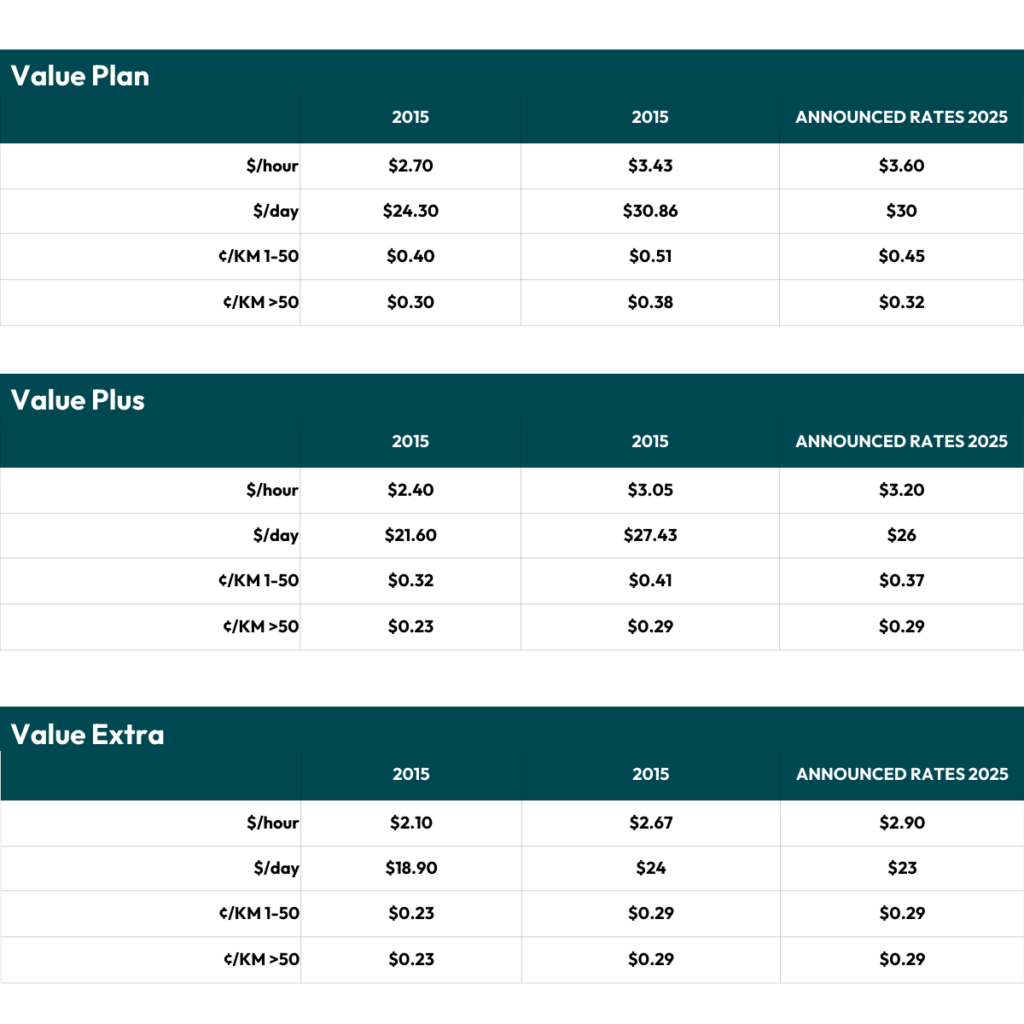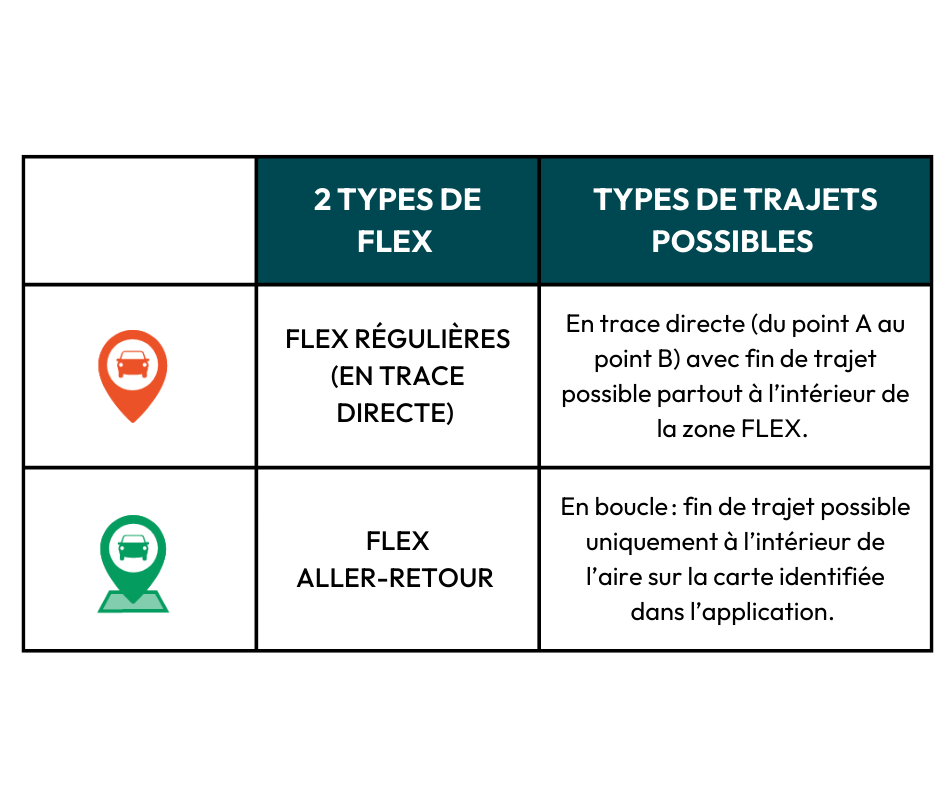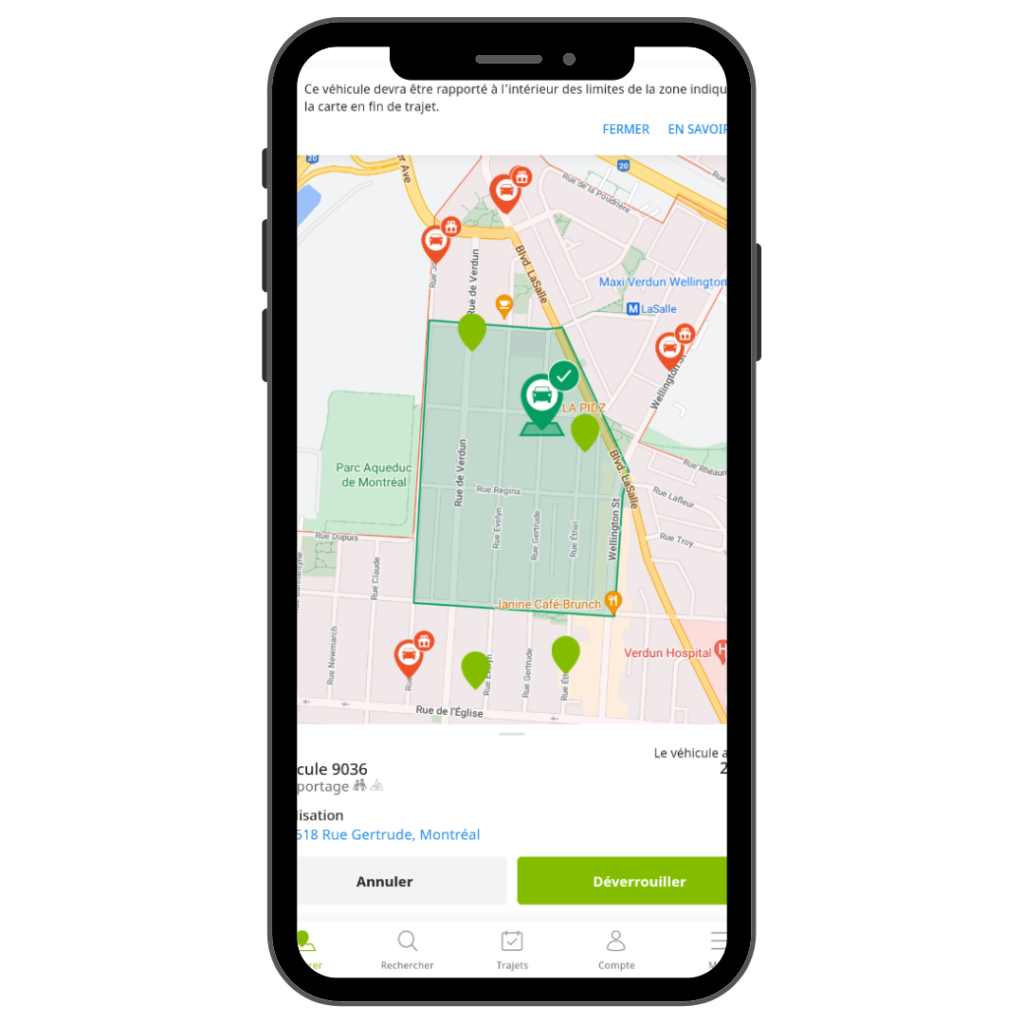Do you know what I hate most about running a carshare company? I’ll put it simply: it’s having to adjust prices! It can be upsetting, and we have to work carefully not to create imbalances between our different membership plans. But this “chore” is necessary. The very survival of our organization depends on it.
When I founded Communauto 30 years ago, I had two important goals in mind:
- Position our service as an alternative to car ownership
- And avoid turning carsharing into another way of subsidizing the automobile
In other words, Communauto has to achieve the first objective while maintaining its financial autonomy. One of my first challenges back in 1994 was to prove that carsharing could be self-financing. Few people believed it at the time, but now it’s been done, and I’m extremely proud of it. We’ve been doing it for three decades now, and it’s important that it continues.
Does covering our costs make Communauto a for-profit organization? Far from it. Although we are neither a co-operative nor a non-profit organization, Communauto has always positioned itself as a company with an urban, social and environmental mission, and we stand by that.
The fact is, however, that we lease motor vehicles and, as you’ve probably noticed, they’re getting more and more expensive. The average cost of the vehicles we’ve added to our fleet in recent years has risen from $21,000 in 2015, to $21,700 in 2019 to $28,000 in 2024 (+29%). This translates into even higher costs for financing and depreciation.
Another major trend is that it costs more and more on average to insure, maintain and repair a vehicle. On the insurance front alone, our deductibles in Quebec rose from $5,000 per accident to $10,000 per accident between 2021 and 2024. Communauto absorbs the difference between this amount and the one charged to you under your damage protection option.
For next year, even though our deductible per accident will remain at $10,000, our insurance bill will still rise by over 20% on average (+40% in Toronto, +50% in Nova Scotia and +25% in Alberta).
If it’s getting more and more expensive for individuals to own a vehicle, and for us to acquire vehicles to share, we have no choice but to adapt. Fortunately, everything is relative. These changes do not impact the positioning of our service in relation to vehicle ownership. For a very large proportion of the population, it will remain more affordable to “share” a car than to own one.
HOW DO WE COMPARE WHEN WE LOOK BACK?
The fact that we’re celebrating our thirtieth anniversary this year gives us a certain hindsight that helps put things into perspective.
For a start, this is not the first time we have adjusted prices more than once within a relatively short period. Our prices were adjusted three times in 2008 and 2011, and four times between May 2013 and May 2014.
Our prices do not increase systematically. In October 2015, for example, our Long Distance rate was $34.95 for the first day, $29.95/additional day and $149.75/week. In 2024 dollars, this would equate to $44.39 for the first day, $38.04/additional day and $190.18/week. However, the prices announced for January 2025 (i.e. 10 years later) are only $39.50 for the first day, $29.95/additional day and $175/week.
On that note, how do all our 2015 prices compare with the prices announced for 2025 if we adjust for today’s dollars? Quite well, objectively speaking (the middle column shows the value of 2015 prices in today’s dollars):
Open and FLEX
| 2015 | 2015 (in today’s $) | 2025 | |
| $/minute (FLEX) | $0.38 | $0.48 | $0.41 |
| $/hour | $12 | $15.24 | $13.50 |
| $/day | $50 | $63.50 | $55/ $50 (FLEX) |
| km included | 100 | 100 | 75 |
| ¢/km | $0.16 | $0.20 | $0.27 |
Open Plus
| 2015 | 2015 (in today’s $) | 2025 | |
| $/hour | $5.60 | $7.11 | $6.85 |
| $/day | $50 | $63.50 | $50 |
| ¢/km | $0.16 | $0.20 | $0.25/ $0.22 (km > 50) |
A table showing the comparative prices of our other plans is available in the appendix (see under my signature).
WHY HAVE THERE BEEN MULTIPLE RATE INCREASES IN A SHORT TIME?
As I said at the outset, I hate changing prices. The more we can contain our expenses, the better our service compares to owning a vehicle. For this reason, when in doubt, I prefer to proceed cautiously and gradually, even if it means making multiple adjustments if necessary.
Long gone are the days when we could make do with simple rules for budgeting. The automotive industry is in a state of flux, and we, like the rest of the population, are paying the price. Vehicles are getting bigger and bigger, and even entry-level models come equipped with electronics that are costly to repair. We underestimated the impact of these changes in the recent evolution of our fleet. Ironically, vehicles are also becoming more and more fuel hungry. So even gasoline is weighing more heavily on our operations.
When we made our initial rate adjustment last May, we were mainly concerned with doing so before the start of the summer season. The data available to us at the time indicated the beginnings of certain trends, but we did not reflect them fully in our prices (I’ve always been rather optimistic by nature…). But the trends observed at the start of the year were confirmed, and this explains the adjustment introduced in October.
Our analyses are always based on the most recent data available. In addition, we are required to give one month’s notice of any rate adjustment. In other words, the changes implemented in October were based on the most recent data available, dating back to July. Now, optimistic as I am, the data for the following months means that, for the coming year, we need to take greater account of rising input costs, rather than simply “catching up” as we have been doing in recent months. This explains the adjustments we are announcing for March.
Are we happy to announce these changes? No! The mission of Communauto has never been to maximize profits, but to maximize the urban, social and environmental benefits of our service. Believe me, if we could have done otherwise, we would have been careful to avoid changing our terms and rates again.
On that note, thank you for being part of our carsharing community.
Benoît Robert
Appendix
Amounts in the first column show prices in October 2015, while those in the second column show the value of these amounts adjusted to today’s dollars.


